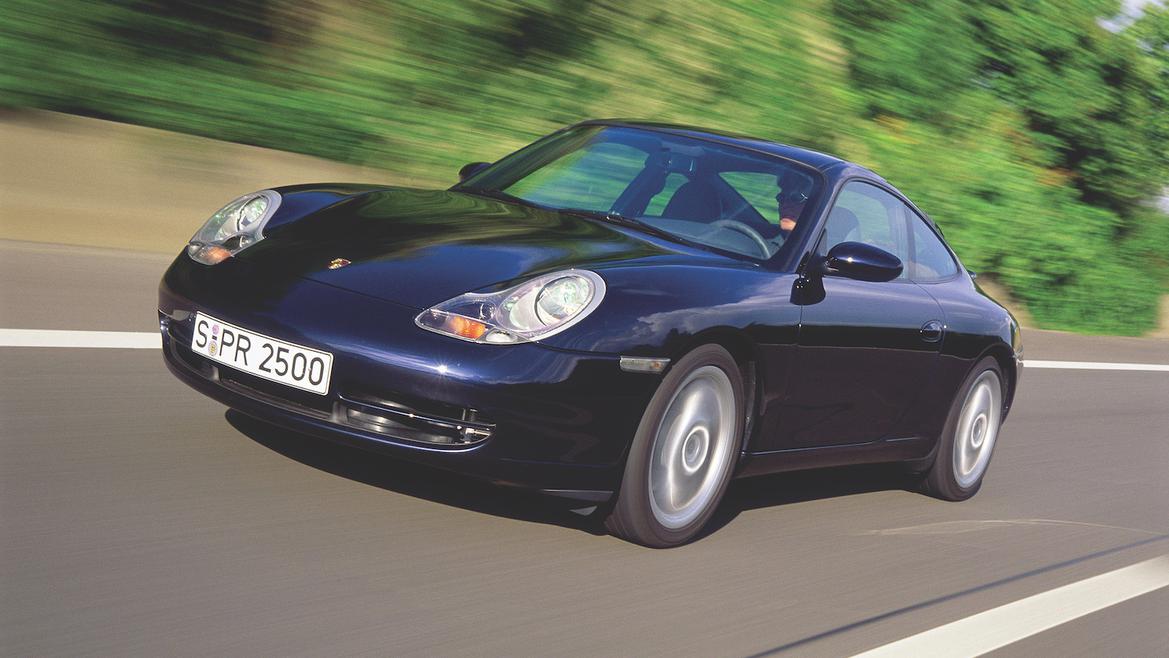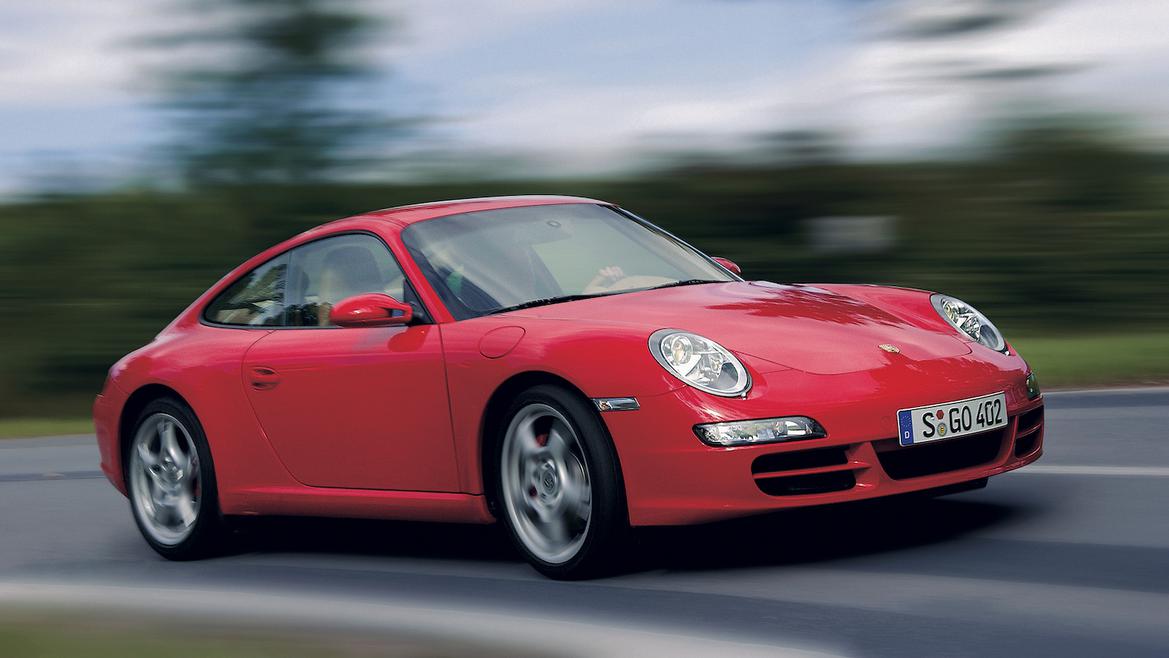The Porsche 911 is an icon of the highest order. Deep motorsports pedigree. Celebrity ownership. A unique, fulfilling driving experience.
Ready to bring home a classic model so you can make your own memories, channeling storied drives at places like Daytona, Sebring and Riverside?
Now what?
Back in olden times, a classic 911 meant something with a long hood and chrome bumpers. Today, though, the category includes a wide range of years, body styles and price points.
The most important advice here, stresses Porsche parts supplier Charles L. Navarro, co-founder of LN Engineering, is to enjoy the experience: “The point of owning these cars is to drive them.”
Choose Your Experience
“What’s the desired ownership experience?” asks Per Schroeder of longtime Porsche parts house Stoddard. Do you want a 911 to restore, clean up or regularly drive?
A first-time Porsche owner likely isn’t going to dive into a full nut-and-bolt restoration on an early, long-hood model–although, Schroeder notes, just about everything is now available to build one from scratch, including the necessary sheet metal.
For those considering a project–from easy repairs to a full redo–he points toward a 1974-’89 car. These are commonly called G-bodies in 911 parlance and are easily identified by their shorter hoods and larger bumpers. They feature galvanized, rust-resistant bodies as well as reliable, fuel-injected engines.
As Schroeder notes, these models currently occupy a sweet spot in the classic car scene: terrific parts support, healthy inventory, strong performance and relatively simple fixes. “Restoring a G-body is a fairly painless operation,” he says.
The glass can easily come out for a full respray, while the interiors are simple to revamp. Both Porsche and the aftermarket offer loads of restoration parts: dashboards and trim pieces, fenders and patch panels.
Even smaller, unique items can be easily sourced. If you need the plastic surround for the door lock knob, for example, it’s available ($10.19 from Stoddard).



You can do a lot with an air-cooled 911. Ours has gone on rallies, been in shows, and even made laps around Daytona. Photography Credits: David S. Wallens
The follow-up air-cooled cars, the 964- and then 993-chassis 911, offer more performance and rock-solid reliability, but there’s a catch: They can be trickier to restore, he notes. As with nearly all Porsches, the maintenance parts are available from various sources. Those are easy.
It’s the restoration parts that can be a bit challenging, Schroeder explains. Factory 993 Turbo headlights are available, for example, but list at $2973.70 each. “There’s no real reproduction parts for a 993,” he adds, while some 964 molding pieces are also simply NLA at the moment.
The air-cooled 911 might be the legend, but make sure that dream matches your current reality. “Before you buy an air-cooled car, drive one,” stresses Manny Alban, technical director for the Porsche Club of America.
He says he wouldn’t think twice about taking his own 165,000-mile 964 on a long road trip–the car is as reliable as a Toyota, he tells us–but admits it’s not for everyone. Alban will take the later Porsche; it’s just more comfortable.
Water Over Air?
For those who want a 911 experience that delivers analog vibes yet hangs less on the restoration and maintenance of an older vehicle, perhaps there’s a newer option: What about a water-cooled car?
Porsche started production of its then-revolutionary 996-chassis 911 in summer of 1997, and U.S. imports began with the 1999 model year. In round numbers, the water-cooled 911 has now been with us for a quarter of a century. The follow-up model, the 997, ran from 2005 through 2012.
“There’s a lot to be said about a 996 or 997,” Alban notes, especially regarding creature comforts like heated seats, cold a/c and Bluetooth connectivity. The newer cars don’t give up any performance, either: Base Carrera versus base Carrera, the first water-cooled cars weigh less than their predecessors while making more power–nearly 300 horses.
“You know how hard it is to get 300 horsepower out of an air-cooled?” he asks. “It’s hard to beat technology.”


Our 997-chassis Porsche 911 Carrera has proved to be equally versatile, taking on hot laps and laid-back tours–all with cold a/c, too. Photography Credits: Chris Tropea
But with an early, water-cooled car comes some baggage: potential issues with bore scoring and the IMS bearing. Porsche used an intermediate shaft bearing–usually shortened to IMS bearing–to drive the camshafts. In the air-cooled cars, this IMS bearing receives a constant supply of engine oil.
In the water-cooled cars, it’s sealed for life–and the life of that bearing might be shorter than the life of the car. When the bearing goes, its debris can wipe out the rest of the engine.
Porsche changed the design of this bearing over the years while also replacing damaged engines under warranty. Today, LN Engineering offers IMS bearing solutions, with different setups depending on the year the engine was manufactured. In round numbers, the upgrades range from $900 to $1900.
The other issue is bore scoring, with a possible culprit being fueling issues washing away the oil film from the cylinder walls. An updated engine released for 2009 seems to have cured both weak points.
“First and foremost, spend the money on a PPI,” stresses Navarro, adding that the pre-purchase inspection should be the invasive type. Scope the bores, measure the compression and check the leakdown. Send out oil for an analysis, too. A proper PPI that costs $2500 could prevent a $25,000 engine rebuild, he notes.
A shop experienced with water-cooled Porsches should be able to read the ECU–DME in Porsche-speak–to look for any problems regarding overrevs or fuel trims, the latter of which could help identify an injector issue that leads to bore scoring. “It could show a problem that hasn’t yet tripped a check-engine light,” Navarro adds.
“You just can’t fall in love with the first car that you find,” he continues. “It’s very alluring to hop on Bring a Trailer and see something.” Stop and perform your due diligence, he insists.
More advice from Navarro: “Don’t make an assumption that a car with low mileage is worth more money. I’ve seen more failures with cars that are low-mileage.”
Cars that sit, he explains, can develop issues–and those issues can include IMS failures and bore scoring. Plus, sitting can be bad for any Porsche or, really, any car in general.
“I usually tell people when they’re buying a 996: Have $7500 to $8500 for preventative maintenance,” he says. “You need to put money aside.”
But don’t let the cost of ownership scare you away, he continues: “How much would you have to spend on a new Porsche to get the same level of enjoyment?” (Answer: A base Carrera now starts at $106,100.)
He also notes that these 996 and 997 cars are the last 911s to be DIY-friendly. “It’s something that you can do a bit of the work yourself,” he states. “Once you get to the newer cars, you can’t.”
And the market has noticed. Prices–especially for the 997 cars–have been moving up to match those of the air-cooled cars. “It doesn’t matter what the car is worth. Value what you get out of the enjoyment of the vehicle,” Navarro says. “Don’t look at purchasing a classic 911 as a 401K investment–and that goes with any car.”
Drive it, he stresses, and enjoy the experience.
More like this
Comments
View all comments on the CMS forums
You'll need to log in to post.







 By David S. Wallens
By David S. Wallens
 Photography Credit: Chris Tropea
Photography Credit: Chris Tropea























